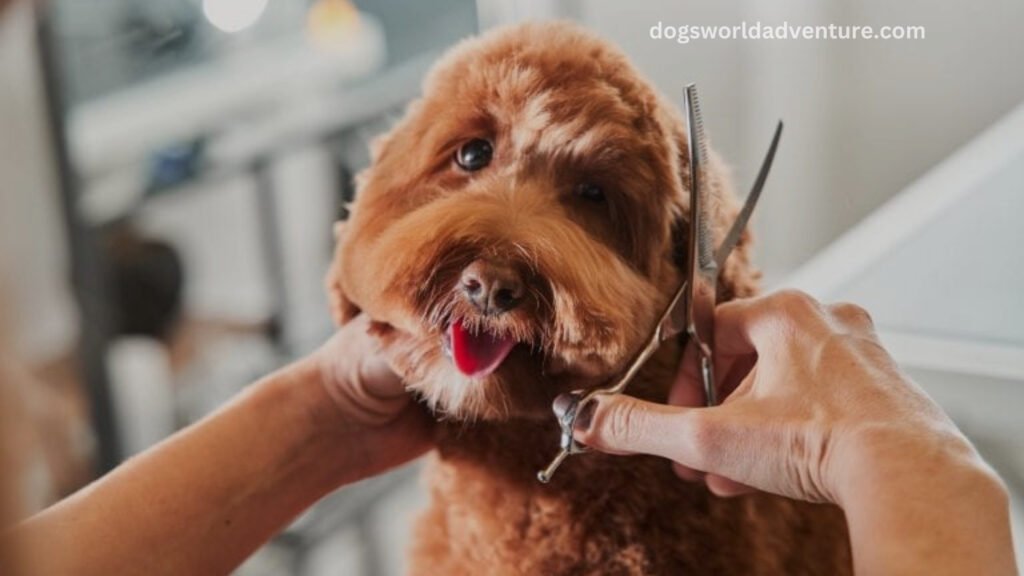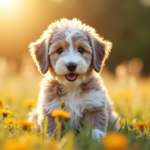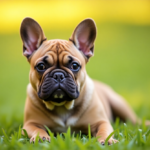Dachshunds, often called “wiener dogs” because of their long, sausage-like bodies, are a fun and friendly dog breed loved by many. They are small dogs with short legs and big personalities. Dachshunds were originally bred in Germany to help hunters catch badgers and other animals. Today, they are known as loyal pets who enjoy spending time with their families. These dogs come in different types, such as smooth, wirehaired, and longhaired, and can be either standard or miniature in size. They are playful, brave, and great companions for both kids and adults.
In this guide, you’ll learn everything about dachshunds, from their history and personality to how to take care of them. We’ll also talk about common health problems, training tips, and how to keep your dachshund happy and healthy. Whether you’re thinking about getting a dachshund or just want to know more about this popular breed, this article will give you all the important information you need.
Read also:French Bulldog
overview
| Origin | Germany |
| Height | 8 inches to 9 inches tall at the shoulder |
| Weight | 16 to 32 pounds |
| Personality | Good with children, Intelligent, Friendly and playful |
| Lifespan | 12 to 15 years |
| Colors | Black & Tan, Chocolate & Tan, Wild Boar |
| Suitable for | Active families, homes with room for play |
| Temperament | Affectionate, friendly, easygoing, and social |
The History of Dachshunds
The dachshund breed originated in Germany over 600 years ago. Their name, “dachshund,” means “badger dog” in German, which gives a hint about their original purpose. Dachshunds were bred to hunt small game, specifically badgers. Their long, narrow bodies were perfect for following badgers into their dens, and their strong jaws and fearless nature made them excellent hunters.
In the early days, dachshunds came in a variety of sizes, depending on what they were hunting. The larger dachshunds, weighing up to 40 pounds, were used to hunt badgers and wild boar. The smaller ones, which we see today, were bred to hunt rabbits and other smaller animals.
As time went on, dachshunds became more popular as pets rather than working dogs. By the 19th century, they had made their way to other parts of Europe and eventually to the United States, where they became beloved companions. In 1895, the American Kennel Club (AKC) officially recognized the breed, and dachshunds have been a favorite in American households ever since.
Types of Dachshunds
There are three main types of dachshunds, each with its own unique coat and characteristics:
- Smooth Dachshund: The smooth dachshund has a short, shiny coat that is easy to care for. These dachshunds are the most common type and require minimal grooming.
- Wirehaired Dachshund: Wirehaired dachshunds have a coarse, thick coat that makes them look a bit scruffy. Their coats are more weather-resistant, making them ideal for outdoor activities. Wirehaired dachshunds need regular grooming to keep their coats in good condition.
- Longhaired Dachshund: As the name suggests, longhaired dachshunds have long, silky coats that require more grooming. These dachshunds are often considered the most elegant looking of the three types. They need regular brushing to prevent matting.
In addition to the different coat types, dachshunds also come in two sizes:
- Standard Dachshund: Weighing between 16 and 32 pounds, standard dachshunds are larger and were originally bred for hunting larger game like badgers and foxes.
- Miniature Dachshund: Miniature dachshunds weigh under 11 pounds and were bred for hunting smaller animals like rabbits.
Both sizes and all coat types share the same lovable and loyal dachshund personality.
Dachshund Personality Traits
Dachshunds are known for their bold, brave, and independent nature. Despite their small size, they have a big personality and are full of energy. Their hunting background makes them fearless, and they are always up for an adventure. Here are some common personality traits of dachshunds:

- Loyal: Dachshunds are incredibly loyal to their owners. They form strong bonds with their families and often prefer to be by their owner’s side.
- Playful: Dachshunds love to play, whether it’s chasing a ball, running around in the yard, or exploring their surroundings. They are energetic dogs that enjoy being active.
- Curious: Dachshunds are naturally curious and love to explore. They will sniff out every corner of the house or yard, and their sharp noses make them excellent at tracking scents.
- Stubborn: While dachshunds are smart dogs, they can also be stubborn. This independent streak can make training a bit challenging, but with patience and positive reinforcement, they can learn quickly.
- Protective: Dachshunds are known to be protective of their families. They may bark at strangers or unfamiliar animals to alert their owners of potential danger. Despite their size, they make excellent watchdogs.
- Affectionate: Dachshunds love attention and are often very affectionate with their families. They enjoy cuddling and being petted, and they are known to follow their owners from room to room.
Dachshunds and Families
Dachshunds make excellent family pets, but it’s important to understand their unique needs and temperament. Here’s what to expect when bringing a dachshund into your family:
- Children: Dachshunds can be great with older children who know how to treat dogs gently. However, they may not be the best fit for very young children, as dachshunds can be a bit nippy if handled roughly. It’s essential to teach kids how to properly interact with the dog, such as not pulling on its ears or tail.
- Other Pets: Dachshunds can get along well with other dogs, especially if they are raised together. However, because of their strong prey drive, they may chase smaller animals like cats, rabbits, or birds. Early socialization is key to ensuring your dachshund gets along with other pets.
- Living Space: Dachshunds are adaptable dogs that can live comfortably in apartments or houses. Their small size makes them suitable for apartment living, as long as they get enough exercise.
- Companionship: Dachshunds thrive on attention and do not like being left alone for long periods. They can suffer from separation anxiety if left alone too often, so they are best suited for families where someone is home for most of the day.
Exercise and Activity Needs of Dachshunds
Dachshunds may be small, but they have plenty of energy and need regular exercise to stay healthy and happy. Here’s how to keep your dachshund active:
- Daily Walks: Dachshunds need at least one walk per day to burn off their energy. A 20-30 minute walk is usually enough, but some dachshunds may enjoy longer walks or multiple outings.
- Playtime: In addition to walks, dachshunds love to play. Games like fetch, tug-of-war, and hide-and-seek are great ways to engage their minds and bodies.
- Mental Stimulation: Dachshunds are intelligent dogs that need mental stimulation as much as physical exercise. Puzzle toys, interactive games, and training sessions can help keep their minds sharp.
- Preventing Back Injuries: Because of their long backs, dachshunds are prone to back problems. It’s important to avoid activities that could strain their spines, such as jumping off furniture. Using ramps or stairs for them to get on and off furniture can help prevent injuries.
How to Train a Dachshund
Training a dachshund can be a bit challenging because of their independent and stubborn nature. However, with patience and consistency, dachshunds can be well-behaved pets. Here are some tips for training your dachshund:
- Start Early: The earlier you start training, the better. Puppy training classes can help dachshunds learn basic commands and socialization skills.
- Use Positive Reinforcement: Dachshunds respond best to positive reinforcement, such as treats, praise, and playtime. Avoid harsh punishments, as they can make the dog fearful or more stubborn.
- Keep Training Sessions Short: Dachshunds have short attention spans, so keep training sessions brief and fun. Five to ten-minute sessions are ideal, and you can have multiple short sessions throughout the day.
- Be Consistent: Consistency is key when training a dachshund. Use the same commands and rewards every time to avoid confusing your dog.
- Potty Training: Potty training a dachshund can take some time, but it’s important to be patient. Crate training can be helpful for teaching your dachshund where to go to the bathroom.
- Addressing Barking: Dachshunds are natural barkers, and while they make great watchdogs, excessive barking can become a problem. Teaching them a “quiet” command can help control their barking.
- Socialization: Early socialization is important for dachshunds to become well-rounded dogs. Expose them to different people, places, and animals from a young age to prevent them from becoming overly protective or anxious around strangers.
Health and Common Problems of Dachshunds
While dachshunds are generally healthy dogs, they are prone to certain health issues. Here are some of the most common health problems dachshunds face:
- Intervertebral Disc Disease (IVDD): Dachshunds are prone to back problems due to their long spines. IVDD occurs when the discs between the vertebrae in the spine degenerate or slip, leading to pain, paralysis, or difficulty walking. To prevent IVDD, it’s important to keep your dachshund at a healthy weight and avoid activities that could strain their back.
- Obesity: Dachshunds love to eat, but their small frames make them more prone to obesity. Keeping your dachshund at a healthy weight is important to prevent back problems and other health issues.
- Dental Problems: Like many small breeds, dachshunds are prone to dental issues. Regular brushing and dental check-ups can help keep their teeth and gums healthy.
- Eye Problems: Some dachshunds are prone to eye problems, such as cataracts or progressive retinal atrophy (PRA), a condition that can lead to blindness. Regular vet check-ups can help catch these issues early.
- Heart Disease: Older dachshunds may develop heart conditions, such as mitral valve disease. Keeping your dachshund at a healthy weight and providing regular vet care can help prevent heart problems.
Feeding Your Dachshund
Proper nutrition is key to keeping your dachshund healthy. Here’s what you need to know about feeding your dachshund:
- Choose High-Quality Dog Food: Dachshunds need a balanced diet that provides all the nutrients they need. Choose a high-quality dog food that is appropriate for their size, age, and activity level. Look for foods with real meat as the first ingredient and avoid foods with fillers like corn or soy.
- Avoid Overfeeding: Dachshunds are prone to obesity, so it’s important not to overfeed them. Follow the feeding guidelines on the dog food packaging and adjust based on your dog’s activity level and weight.
- Healthy Treats: It’s okay to give your dachshund treats, but be mindful of how many you give. Choose healthy treats, such as small pieces of cooked chicken, carrots, or store-bought treats designed for small dogs.
- Meal Schedule: Most dachshunds do well with two meals a day, one in the morning and one in the evening. Avoid free feeding, as it can lead to overeating and weight gain.
- Special Diets: Some dachshunds may require a special diet due to health issues. If your dachshund has allergies, weight problems, or other health concerns, talk to your vet about the best diet for them.
Grooming Your Dachshund
Grooming needs for dachshunds vary depending on their coat type. Here’s a guide to grooming each type of dachshund:
- Smooth Dachshund: Smooth dachshunds have short, sleek coats that require minimal grooming. A weekly brushing with a soft brush is usually enough to remove loose hair and keep their coat shiny. Bathing is only necessary when they get dirty.
- Wirehaired Dachshund: Wirehaired dachshunds have a coarse, thick coat that needs regular grooming. Brush their coat at least twice a week to prevent tangles and matting. They may also need their coat hand-stripped a few times a year to remove dead hair. Wirehaired dachshunds should be bathed every 4-6 weeks.
- Longhaired Dachshund: Longhaired dachshunds have silky, flowing coats that require the most grooming of the three types. They need to be brushed several times a week to prevent tangles and matting. Regular bathing, about every 4-6 weeks, will keep their coat looking clean and healthy.

In addition to coat care, all dachshunds need regular nail trims, ear cleanings, and dental care. Keep their nails trimmed short to prevent discomfort and ear infections, especially in longhaired dachshunds, can be prevented by cleaning their ears regularly.
Dachshund Puppies: What to Expect
Bringing a dachshund puppy into your home is an exciting experience, but it also comes with responsibilities. Here’s what to expect when raising a dachshund puppy:
- Puppy-Proofing Your Home: Dachshund puppies are curious and love to explore, so it’s important to puppy-proof your home. Remove any dangerous items or small objects they could chew on or swallow.
- Early Training: Start training your dachshund puppy as soon as you bring them home. Early socialization and training are key to raising a well-behaved dachshund.
- Feeding Schedule: Dachshund puppies need to eat more frequently than adult dogs. Feed your puppy three to four small meals a day, gradually reducing the number of meals as they grow.
- Teething: Like all puppies, dachshunds go through a teething phase where they chew on everything. Provide plenty of chew toys to keep them occupied and prevent them from chewing on furniture or shoes.
- Vaccinations: Keep up with your dachshund puppy’s vaccination schedule to protect them from diseases like parvovirus, distemper, and rabies.
- Patience: Raising a dachshund puppy requires patience. Puppies are full of energy and curiosity, but with time and training, they will grow into loyal and well-behaved companions.
Traveling with a Dachshund
Dachshunds can make great travel companions, but it’s important to take precautions to ensure their safety and comfort. Here’s how to travel with your dachshund:
- Car Safety: When traveling by car, always secure your dachshund in a crate or with a dog seatbelt to keep them safe. Dachshunds are prone to back injuries, so it’s important to prevent them from jumping around in the car.
- Packing for Your Dog: Bring all the essentials for your dachshund, including food, water, bowls, a leash, a harness, and any medications they may need. Don’t forget their favorite toys and a blanket for comfort.
- Frequent Breaks: If you’re on a long road trip, make frequent stops to let your dachshund stretch their legs and go to the bathroom.
- Air Travel: If you’re flying with your dachshund, check with the airline about their pet travel policies. Dachshunds are small enough to travel in the cabin in an airline-approved carrier, but make sure to familiarize your dog with the carrier before the trip.
- Dog-Friendly Destinations: When planning your trip, choose dog-friendly accommodations and activities so your dachshund can enjoy the trip with you.
Dachshund Accessories
There are many accessories designed specifically for dachshunds to make their lives more comfortable and fun. Here are some must-have dachshund accessories:
- Harness: Dachshunds are prone to back injuries, so it’s best to use a harness rather than a collar for walking them. A harness distributes pressure more evenly and reduces strain on their neck and back.
- Dog Bed: Dachshunds love to burrow, so they appreciate soft, cozy beds. Look for a bed with a bolster or blanket for them to snuggle under.
- Ramp or Stairs: To prevent back injuries, use ramps or stairs to help your dachshund get on and off furniture.
- Chew Toys: Dachshunds love to chew, so providing durable chew toys is important for their dental health and to prevent destructive chewing.
- Clothing: In colder weather, dachshunds may benefit from wearing a sweater or jacket to stay warm, especially if they are smooth-coated.
Dachshunds and Their Lifespan
Dachshunds are a relatively long-lived breed, with an average lifespan of 12-16 years. To ensure your dachshund lives a long, healthy life, it’s important to provide proper care and regular vet check-ups. Here’s what to expect as your dachshund ages:
- Senior Dachshund Care: As dachshunds age, they may experience arthritis, back problems, or other health issues. It’s important to keep them at a healthy weight and provide regular vet care to manage any age-related conditions.
- Diet Adjustments: Senior dachshunds may need a different diet to address their changing nutritional needs. Your vet can recommend a senior dog food that supports joint health and prevents weight gain.
- Exercise for Older Dachshunds: While older dachshunds may not be as energetic as they once were, they still need regular exercise to keep their muscles strong and maintain a healthy weight.
- Quality of Life: As your dachshund enters their golden years, it’s important to focus on their quality of life. Regular vet visits, a comfortable environment, and lots of love will help them enjoy their senior years.
Fun Facts About Dachshunds
Here are some fun and interesting facts about dachshunds that you may not know:
- The First Official Dachshund Club: The first official dachshund club, the Deutscher Teckelklub, was founded in Germany in 1888.
- Wiener Dog Races: Every year, dachshund races are held in various cities around the world. These events, often called “wiener dog races,” are a fun way to celebrate the breed’s speed and agility.
- Famous Owners: Many famous people have owned dachshunds, including artists Pablo Picasso and Andy Warhol, actress Adele, and Queen Victoria.
- Dachshunds in Cartoons: Dachshunds have appeared in many cartoons and movies, such as Disney’s “The Ugly Dachshund” and Pixar’s “Toy Story.”
- Dachshund Symbol in Germany: The dachshund is a national symbol of Germany, where the breed was originally developed.
Dachshunds in Media and Pop Culture
Dachshunds have made their mark in media and pop culture over the years. From movies to memes, dachshunds are everywhere. Here are some notable appearances of dachshunds in media:
- Movies and TV Shows: Dachshunds have appeared in movies such as “The Secret Life of Pets” and “Lady and the Tramp.” They have also made appearances in TV shows like “Family Guy” and “The Simpsons.”
- Cartoon Characters: Dachshunds have been featured as cartoon characters, such as Slinky Dog from “Toy Story” and Rowlf the Dog from “The Muppet Show.”
- Internet Fame: Dachshunds are internet sensations, with many famous dachshund influencers on Instagram and TikTok. Their unique looks and playful personalities make them favorites on social media.
- Dachshund Memes: Dachshunds are the subject of many popular memes, often poking fun at their long bodies or stubborn behavior.
Conclusion: Why Dachshunds Make Great Pets
Dachshunds are a unique and lovable breed with plenty of personality. Their bold, brave, and loyal nature makes them wonderful companions for families, singles, and seniors alike. While they may require a bit of extra care due to their long backs and independent streak, the love and joy they bring are well worth the effort. Whether you’re looking for a playful puppy or a loyal watchdog, the dachshund is a breed that will quickly win your heart.
FAQs
- Are dachshunds good with young children? Dachshunds can be great with older children who know how to handle them gently, but they may not be the best fit for very young kids due to their small size and sensitivity.
- Do dachshunds require a lot of exercise? Dachshunds have moderate exercise needs. They enjoy daily walks and playtime but don’t require excessive exercise.
- How often should I groom my dachshund? The grooming needs depend on the type of dachshund. Smooth dachshunds need minimal grooming, while wirehaired and longhaired dachshunds require more frequent brushing and grooming.
- What health problems are common in dachshunds? Dachshunds are prone to back problems (IVDD), obesity, dental issues, and heart disease.
- How long do dachshunds live? Dachshunds have an average lifespan of 12-16 years.
- Can dachshunds live in apartments? Yes, dachshunds can live comfortably in apartments as long as they get enough exercise and mental stimulation.
- Are dachshunds easy to train? Dachshunds can be a bit stubborn, but with patience and positive reinforcement, they can be trained effectively.
- Why are dachshunds called “wiener dogs”? Dachshunds are often called “wiener dogs” because of their long, sausage-like bodies.
- Do dachshunds shed a lot? Smooth dachshunds shed very little, while wirehaired and longhaired dachshunds shed more and require regular grooming.
- How can I prevent back problems in my dachshund? To prevent back problems, keep your dachshund at a healthy weight, avoid letting them jump off furniture, and provide ramps or stairs for them to use.







